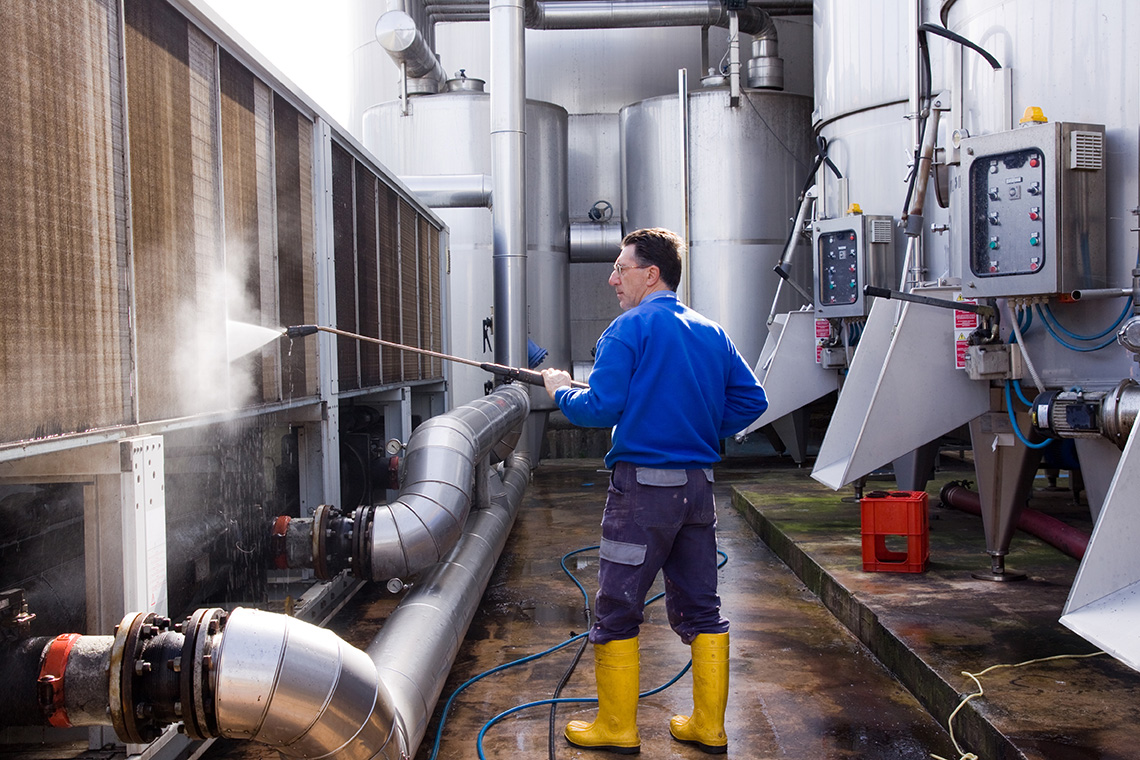The dangers for staff unfamiliar to Hazardous Area requirements, and how to provide your business with the tools to improve safety.
During business-as-usual operations within your facility you will find ancillary staff entering and interacting with Hazardous Areas. These ancillary staff will most likely include cleaners, maintenance, general management… the possibilities are vast and will vary between sites.
What is wrong with ancillary staff entering Hazardous Areas?
Nothing, in principle, provided that those staff have had the opportunity to have been properly informed of the dangers and trained to combat instances promoting hazards.
One prime example where things could go wrong, and often have, is cleaners implementing cleaning regimes within hazardous areas. Whilst cleaning of surfaces, equipment and environments in general during the current post-covid world involve the use of anti-virus agents and chemicals, these can be detrimental to the explosion protection provided by ATEX equipment. Many assets within your hazardous area will rely upon gaskets and seals which can perish over time with the use of some cleaners. This renders them useless in protecting the electrical components inside from the potentially explosive atmospheres surrounding them. Solvent based cleaners will damage gas detection equipment’s sensors which we all rely on so heavily within the industry, they should only ever be cleaned in line with the instructions or ‘special conditions’ issued within the ATEX certificate. If your cleaners haven’t been advised of these ‘special conditions’, or cannot access ATEX certificates within your EPD, they should not be cleaning ATEX assets.
Another common practice within general cleaning processes, with a much more immediate potential for harm, is the act of polishing or dusting. Can you guarantee your cleaning staff are fully aware of the dangers of static electricity within a potentially explosive environment? The simple act of lightly rubbing over a surface or piece of GRP equipment with a dry cloth can instantly ignite an explosive mixture of vapour and/or dust within the atmosphere.

Would your ancillary staff be able to recognise a potential hazard specific to the area that they are working in?
Within Hazardous Areas, people should be able to identify symptoms of inhalation and/or inadvertent consumption of the relevant substances they may be exposed to. One instance of this is the dangers of vapours from certain hydrocarbons, whereby their relative mixture within the general atmosphere can be detected in low percentages by the sense of smell alone. Once the density of some vapours increases beyond a certain percentage, the detection by smell alone becomes impossible and anyone in the area can easily be fooled into believing they were only exposed to a ‘waft’ of vapour. Intoxication or incapacitation can quickly set in once someone is exposed beyond a certain level of exposure.
The use of a gas detector within certain areas is vital and some facilities will suggest work can only be permitted on the express condition that they are used. Where gas detection is used, people can become complacent, and in many cases ‘brothers-keeper’ policies are as important a component to safety. The use of regular communication by radio, or visual contact can be as effective as any expensive equipment when used properly, but can your staff be expected to communicate properly and spot the signs of someone succumbing to hazardous substances? People will not always be able to articulate their symptoms as they may not be aware of them. For example, I have personally witnessed a person become disorientated or confused when exposed to a small amount of vapour. They are not always aware of the effects on them, but someone working nearby, keeping an eye on them may notice them struggling to perform very simple tasks such as, in my case, locating a small grub screw. Upon investigation and removing myself and my colleague from the situation safely, we were able to determine that ‘blanked’ pipework adjacent to a pump being worked on, had a minor venting leak and vapours were causing my colleague harmful symptoms. It turns out the gas detector being used was picking up a small quantity of the substance in the atmosphere but wasn’t alarming. The prolonged exposure to a miniscule amount was able to disorientate an experienced person.
Are your ancillary staff aware of the requirements to avoid certain equipment in Hazardous Areas?
There have been many instances in my career where I have needed to intervene when someone unfamiliar with the risks has used their mobile phone, or a hoover within an area classified as Hazardous, according to the sites DSEAR risk assessment.
When dropped, a mobile phone can damage and rupture the battery. This can release a huge amount of energy, igniting the explosive atmosphere surrounding it. Simply pressing the ‘ON’ button of any electrical device can cause a spark capable of causing an explosion. Even wearing of some clothing and shoes can propagate the risk of ignition. Your employees are protected under ATEX directives, in part, by the requirement for their employer to supply them, in some cases, with Anti-Static clothing and footwear. It is quite common in smaller facilities for these requirements to go unmet.
What you can do to improve the safety of your site and staff.
Training and courses such as DSEAR awareness days, can impart invaluable information onto staff who are unfamiliar with specific Hazardous Area dangers. One specific course I would recommend to all facilities that operate any form of hazardous area is the CompEx Foundation course, (ExF). This course can be accessed nationally, without prerequisites. CompEx ExF will afford those who partake in the course the ability to understand Hazardous Area Classification overview, safe working practices & basic protection concepts. However, the course will be able to instigate good practices and promote a safe culture within your business towards working in hazardous areas.
Should you or your business want any further information, or assistance with improving your site and staff’s safety, please get in touch. We will be able to advise or put you in touch, immediately, with one of our associates capable of meeting your needs.
